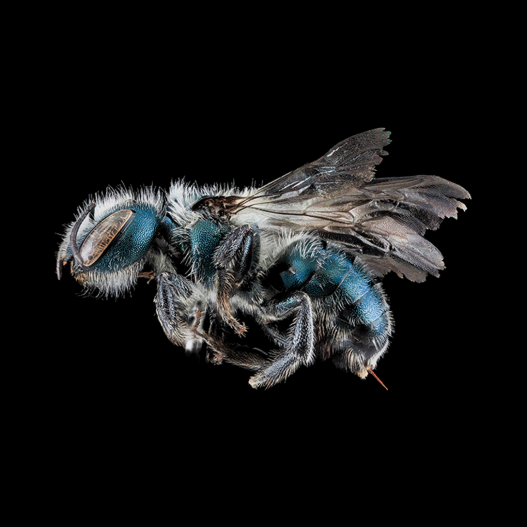August 2023 Edition | Volume 77, Issue 8
Published since 1946
Two USGS Publications Outline Pollinator Conservation Efforts
Pollinator species in the U.S. are in crisis based on broad-scale changes in land-use and climate. Biodiversity of pollinators in the United States includes more than 4,000 species of insects, birds, and mammals. Scientists within several USGS Ecosystems Mission Area (EMA) programs, including the Cooperative Fish and Wildlife Research Units, the National and Regional Climate Adaptation Science Centers (CASCs), and Ecosystems Science Centers, are contributing their diverse expertise to study the effects of climate on pollinators. USGS recently released two publications that outline some of this research.

Ecosystems—whether agricultural, urban, or natural—depend on pollinators, great and small. Pollinators in the form of bees, birds, butterflies, bats, and even moths provide vital, but often invisible services, from contributing to biodiverse terrestrial wildlife and plant communities to supporting healthy watersheds. Pollinator declines worldwide have been noted as land-use and climate changes occur on the landscape. This is alarming because up to 75% of crop species that are important for human food production depend on pollinators for production.
The Committee on the Status of Pollinators in North America summarized active and passive management alternatives to benefit pollinators and reduce their decline. Because assessment of pollinators in the United States has historically lagged behind other regions of the world, the Committee challenged the USGS and U.S. Fish and Wildlife Service (USFWS) to develop conservation plans for pollinators, including quantification of the effects of climate change. As an example of the immediate need to focus efforts on pollinator conservation, Committee member David Inouye and others cited the USFWS’s 2017 listing of the rusty-patched bumble bee (Bombus affinis) as Endangered under the U.S. Endangered Species Act (ESA) of 1973. Strategies are being developed to accomplish pollinator conservation goals and the USGS is contributing scientific expertise toward those goals.
The Bees are not Optional factsheet describes ongoing USGS studies to inform pollinator conservation for partners, especially for application of decision-making regarding conservation and management actions related to climate change. Landowners and managers across the U.S. apply USGS pollinator science at many locations. Pollinator science in the USGS is diverse and includes topics from determination of timing of when plants bloom for pollinators to how endangered bumble bee populations are responding to climate change and habitat alteration.
The USGS Bee Lab is a collaborative interagency joint venture and international leader for bee (Hymenoptera: Apoidea) identification, survey design, quantification of bee and plant interrelations, and development and maintenance of occurrence databases. Each of these objectives supports native bee conservation by providing critical data and tools for the U.S. and internationally. The Bee Lab is a product of the USGS Eastern Ecological Science Center (EESC) and located in Laurel, Maryland, at the U.S. Fish and Wildlife Service (USFWS) Patuxent Research Refuge. The new Bee Lab factsheet describes the laboratory as well as the research and services offered.
The laboratory houses scientists from the EESC and the USFWS to develop identification tools and survey design support for State, Federal, Tribal, and nongovernment organization partners. In addition to the development of identification tools, important objectives include developing keys for native and nonnative bee species and making those tools accessible to partners and the public. Among the most visible and reused products produced during the development of the tools are the detailed photographs of the bees themselves. Accurate bee identification allows for better monitoring of bee species and examination of environmental factors that may influence their populations.
The ONB features articles from Cooperative Fish and Wildlife Research Units, U.S. Geological Survey. The Units are leading exciting, new fish and wildlife research projects that we believe our readers will appreciate reading about. Authors for USGS fact sheets 2023-3026 and 2023-3023 are Jonathan Mawdsley, Chief, Cooperative Research Units, jmawdsley@usgs.gov and Elise Irwin eirwin@usgs.gov.